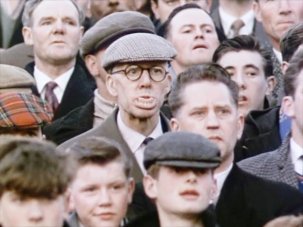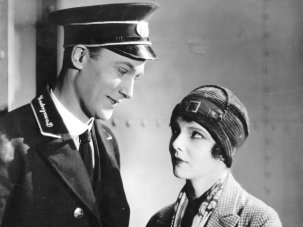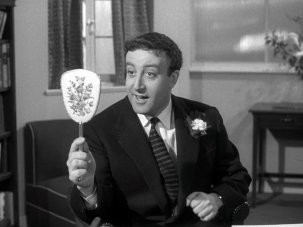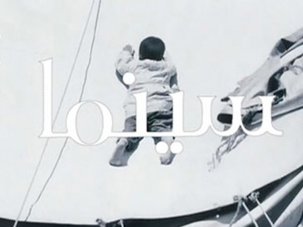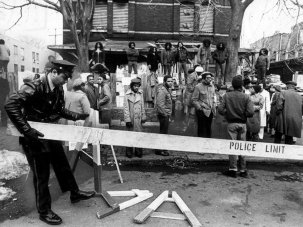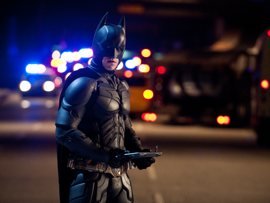Web exclusive
Earlier this year the British Pathé archive was made available online. Pioneers of filmed news, Pathé has digitised its collection – dating back to 1910 – of over 80,000 historic news items that once played in cinemas across the country. Since the origins of Pathé lay in Paris and with moving-image innovator Charles Pathé, it seems apposite to launch this series – which will examine a video clip demonstrative of a different web film archive each month – with another Parisian visionary.
Death Jump – Eiffel Tower 1912
from the British Pathé archives
Within this wealth of Pathé footage exists a short, soundless video from 1912. It records the moment that Austrian-born inventor Franz Reichelt – ‘The Flying Tailor’ – jumped from the first platform of the Eiffel Tower to test his proto-parachute suit, and died on impact.
It sounds grisly, but the footage is too shaped to be sensational. Furthermore, it isn’t (except indirectly) Reichelt’s dying that’s of interest. The fetching of his lifeless body off the grass of the Champ de Mars isn’t graphic – you can’t see him for the small crowd carrying him out of frame – and is the least dramatic of the film’s four units.
French intertitles make clear the film’s focus: in translation they read, “As if he foresaw the horrible fate that awaited him, the doomed inventor hesitates for a long time before jumping into the void.”
It’s this length of time that Reichelt stands upon the ledge, ready to leap, that’s compelling. This section alone, at 40 seconds long, accounts for almost half the clip, and all the time Reichelt looking down, the fog of his breath visible on the air. A man – a friend, perhaps – feet planted safely on the platform proper, wraps his arms around himself against the cold, icier for the altitude. Reichelt stands with one foot on the guardrail, the other on a stool, the black slack of his silk suit that looks to modern eyes like a sleeping bag against the regimental shapes of the tower’s architecture, bisected by railing that rims the passerelle behind him.
Were a fiction movie to dramatise Reichelt’s attempt, an actor would never stand so long. We know already from the intertitles that Reichelt died in the jumping; we know he’ll take the step. But the time he spends in stalling at the precipice could convince us otherwise. The overlong-ness, the interminable waiting, frustrates the historicising detachment of the film camera. The longer it rolls the more it appears to lose the dispassion appropriate to the newscast.
This is also symptom of Reichelt’s interacting with the camera at the start of the clip: showing off the flying suit, turning slowly on the spot, he takes off his hat to the cameraman. Though he never acknowledges the camera while standing on the ledge, it’s too late to revoke that relationship: he’s conditioned the camera, humanised it, made intimate with it. It’s a great example of how retentive of feeling the camera lens can be, how much like an eye in its responsiveness and usurpation of sentiment.
The film is tremendously cinematic. It’s newsreel, but it couldn’t be better filmed for dramatic effect. The gothic glamour of the unfolded suit is first funny, then suddenly – as Reichelt turns sideways on committing to the jump, obscuring his face in the process – it’s the Grim Reaper we glimpse in the black-clothed figure with pointed hood, angel of the abyss, a grave presentiment – just as it’s too late to turn back. There’s theatre in the high suspense, the framing (Reichelt far right, and all that’s to the left of him, empty, beckoning space), the inexorableness of his making the jump and – cut to symmetrically centre of the legs of the Eiffel Tower – the contrasting, smacking brevity of his fall.
Film is a continuum and images beget images. When one watches a film, parallels involuntarily come to mind. They press at the backs of our eyes. Fewer than two decades after Reichelt’s death, a time he might have lived to see, America’s DC Comics (then National Publications) created ‘the Bat-Man’, a black-cloaked, crime-fighting saviour of industrial sprawl – the fictional Gotham City. Reichelt’s motivations were altruistic: his parachute invention was always intended to preserve the lives of wartime airmen. Batman gained a dedicated comic series in 1940, inspiring multiple film and television adaptations since. But across all of his reincarnations, there is one iconic image that prevails: his balancing on a precipice high above the city, no superpowers but technology, and the science behind the suit. From his vantage point on the platform, Reichelt had before him a (no doubt beautiful) view of a veritable metropolis, stretching for miles around and smoking in the freeze – if only he’d look up.
The nature of death is never more difficult to fathom than when captured on film. Replay the clip, and Reichelt is revived, animated as in life. Film’s verisimilitude is the reason we retell the legend of the Lumière brothers’ The Arrival of a Train at la Ciotat Station (1896) – a 50-second silent picture of a train pulling into a station that seems to loom upon the viewer in life-size and real-time – which, at its first screening, is said to have caused the audience to leap out of their seats.
It’s the reason why it’s so hard to imagine that the extraordinary comedian and actor Robin Williams, who died last month, could have gone out of life. Even as grieving his loss, when sat before any one of his impressive performances, it’s impossible but to be totally absorbed in his vitality, his restless invention, and the infinitude of his life-and-soul exuberance. Long may we replay, and Williams live and live again on screen.
-
The Digital Edition and Archive quick link
Log in here to your digital edition and archive subscription, take a look at the packages on offer and buy a subscription.




